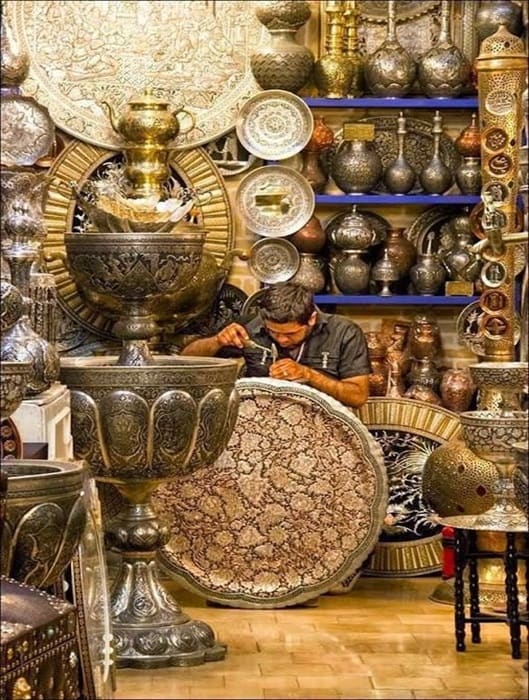Metal Work
The beginning of the art of metalworking in different parts of the world dates back to the discovery of metal in each region. The discovery of bronze and other copper alloys is known as the second most important event in the history of Iranian art. In the fourth millennium BC, the production of copper and arsenic alloy was widely used in the plateau of Iran. The oldest documents of bronze production in Iran are related to the works discovered in the Kaleh Nisar region in Lorestan. In other spots such as Shush, Silk, Tape Hesar, and Tape Gyan, bronze production became customary until the third millennium BC. The Achaemenid era can be introduced as the golden age of metalwork in Iran and a lot of delicate artistic objects have remained from this era.
Read MoreAfter the Achaemenid era, during the Parthian and Sassanid eras, metalwork in Iran not only did not lose its prosperity, but also the widespread use of silver metal, which was much easier to obtain than gold, became customary.
With the arrival of Islam in Iran, due to the restrictions on the use of gold and silver containers, metalwork in Iran had a significant decline at first. In contrast, arts such as book design, pottery and architecture developed significantly due to the needs of religion and the new government. In the 16th and 17th centuries, the Safavids came to power in Iran, and the metalwork of this era continued to grow in line with the artistic trends of the Seljuk to Timurid eras. In this era, Isfahan, as one of the important metalworking centers in the heart of Iran, found a new prosper and became the most important metalworking center in this period. In today’s Iran, various cities such as Isfahan, Tehran, Tabriz, Shiraz, Kerman, Zanjan, Qom and Mashhad are considered the most important centers for the production of contemporary metal works of art. The most important common metal arts in Iran include: Copper, Brass, Silver, Gold, Bronze, Nickel Silver.
A mixed variety of Iranian metal arts include:
Casting, Engraving, Jewelry (gold, silver and rhinestones), Gold Studding, Latticework, Enameling, Silverwork, Turquoise Fixing, Emboss work, Copperwork, Lock Making





GOLD STUDDING
The art of making designs on steel bodies by means of very thin threads of gold is called gold studding.
Lattice work
Lattice working (Moshabbak) is a kind of decorative work which is performed on the surface of metals like gold, silver, copper and etc. Moshabbak means making holes.
Enameling
Enameling is an art based on painting and decoration of the surface of metal bodies and rarely ceramic objects covered by a coat called enamel.
Silver Work
The history of silver metal and other metals has played an important role in human development, so that a major era of human development in history is known as the Bronze Age.